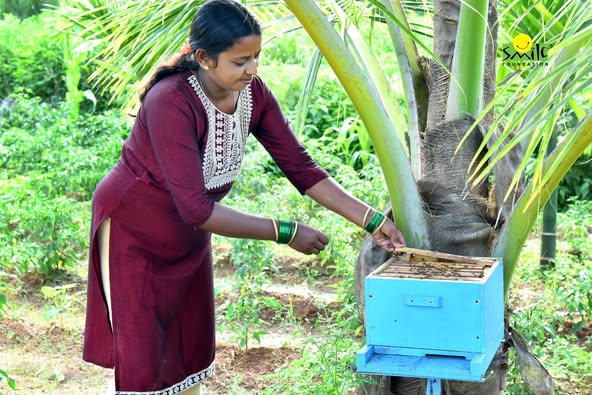When her son was five years old, Neelima Menon got her son a piggy bank. “Whenever our relatives visited us, they would give him money. We taught him to put it into the piggy bank and use it to buy any new toy he wanted. That introduced him to the concept of budgeting and saving,” says Neelam, a 35-year-old IT professional.
“Now he is 15 years old, and my husband is teaching him about investing in the stock market. “We believe financial literacy is very important. It is a life skill and should ideally be taught in schools,” says the Bengaluru resident.
What is financial literacy?
Financial literacy is the ability to understand and effectively manage personal finances and make informed financial decisions by understanding and using financial concepts and skills. This includes budgeting, saving, investing, debt management, understanding of financial products and financial planning.
Importance of being financially literate
According to an article in India Today, 76% of the Indian population is financially illiterate and only 4.2% possess advanced financial knowledge. A large portion of the population is vulnerable to financial pitfalls, including crippling debt and underinvestment in wealth-building opportunities. That’s why financial literacy is important for everyone, regardless of age, educational background or income level.
“It is important to teach your children financial literacy. They need to know the value of money and learn to differentiate between needs and wants,” says psychologist Mini Rao. “Needs, their parents will provide for since it’s a necessity, but for wants which is a luxury, they have to save up for it.”
Benefits of introducing children to the world of finance
Early financial education helps to inculcate good money management habits, promotes responsible spending and saving, and prepares children to shoulder future financial responsibilities. Teaching children budgeting, saving, investing and the value of money will help them recognise and avoid common financial pitfalls, understand the consequences of impulsive spending, accumulating debt, etc.
They will be better equipped to set and meet long-term financial goals regarding higher education, home ownership and planning for retirement.
“When I first began working, I thought my life was settled as I was earning a salary. I didn’t realise that 3% to 5% salary growth isn’t enough to manage in the world. The reality hit me only years later, so I want my son to learn financial management early on,” says financial coach and licensed insurance advisor Muthu Kishor.
Catch them young
According to research done by Cambridge University, our approach to money is set by the age of seven. Behaviour experts David Whitebread and Sue Bingham of the University of Cambridge reviewed previous studies to determine how children learn in general and how they learn about money in particular. They concluded that money habits — including the ability to plan ahead and to delay gratification — are typically formed early in childhood. The 2013 study found that most people’s money habits are formed from zero to seven years of age.
While it doesn’t mean that if you have missed that window period, it is too late, it’s always better to teach financial concepts at a young age.
Ways to teach children about money
Here are some age-appropriate ways in which you can teach children about finance.
- At three to five years, you can teach them about coins and notes, says Mini. “Play games to differentiate coins and notes,” she says.
- Introduce basic concepts such as saving and simple budgeting through games and real-life activities, such as saving for a toy. “With children aged between five and eight you can discuss spending, saving, and investing money. You can use piggy banks, and playing the game Monopoly is also useful as it gives the kids a different perspective,” says Mini.
- Children aged eight and above can be asked to track cash flow, says Muthu Kishor. “When anyone gives them money, you can ask them to keep track of their expenses, and teach them to save a portion of it,” he says. Children aged eight and above can be taught the value of money by linking their pocket money to the chores they do, say other experts.
- Many banks offer special savings accounts for minors, so you can open a bank account in their name and teach them practical banking skills and concepts. “Though many things can be done online, you should you’re your children to the bank and teach them how to deposit cash physically etc.,” says Muthu Kishor.
- Older children aged 15 and above can be taught about investing, the stock market, different financial products and how to research and manage assets.
- Have honest conversations about money. While many parents hesitate to talk about household expenses and budgets with their children, discussing it will help children learn how to respond to and deal with contingencies. “I am a stock market trader, and I deliberately tell my son what I am doing. Since he is only five, he may not understand it but it will register somewhere and when he grows up he will comprehend it faster,” says Muthu Kishor. “My wife used to tell him stories in English when he was only a year old. Now he’s going to school, he is able to learn English fast, so early lessons matter.”
Government initiatives towards financial literacy
The Reserve Bank of India (RBI), the Securities and Exchange Board of India (SEBI), and the National Centre for Financial Education (NCFE) have all recognised the importance of improving financial literacy among young people, says the India Today article. According to it, even in recent years, RBI and NCFE have introduced programmes aimed at improving financial awareness among school children but the impact remains limited without making financial literacy a mandatory part of the school curriculum.
For instance, RBI has a financial education initiative. As part of it, RBI has created a critical volume of literature and has uploaded on its website in 13 languages for banks and other stakeholders to download and use. The aim of this initiative is to create awareness about financial products and services, good financial practices, going digital and consumer protection. Financial Literacy Week 2024, which was observed from February 26 to March 01, 2024, revolved around the theme “Make a Right Start- Become Financially Smart”. The messages disseminated during the week were focused on saving and power of compounding, banking essentials for students and digital and cyber hygiene.
Call to teach financial literacy in schools
Financial literacy has been made mandatory in national curricula in countries such as Australia and Canada. And experts advocate India to emulate the example.
“It is one of the basic life skills and it should be made mandatory for teachers to teach children the importance of money, so children know how hard it is to earn it and how carefully they need to spend it,” says Mini.
Making children money-wise
With more awareness, there is a growing demand for classes teaching children finance. And several private coaching classes have cropped up to meet the demand.
NGOs have also been addressing the issue. When women get financially literate, the knowledge is more likely to be passed on to children as children tend to be closer to their mothers. A financially literate mother can motivate her children to be savvy with money.
“When daughters see their mothers financially independent, it is a huge boost to them to emulate them. In a patriarchal society like ours, we need to push women to be financially independent at a young age,” says Mini. “With it comes self- confidence and higher self- esteem.
Smile Foundation’s women empowerment programme, Swabhiman, has a digital financial literacy component, which has been empowering women with the knowledge and skills to effectively navigate the digital financial landscape. The programme provides education and training on various aspects of digital finance, including online banking, mobile payments, budgeting tools and safe online transactions. It equips women with the necessary skills to manage their finances, make informed decisions, and access financial services through digital platforms.









